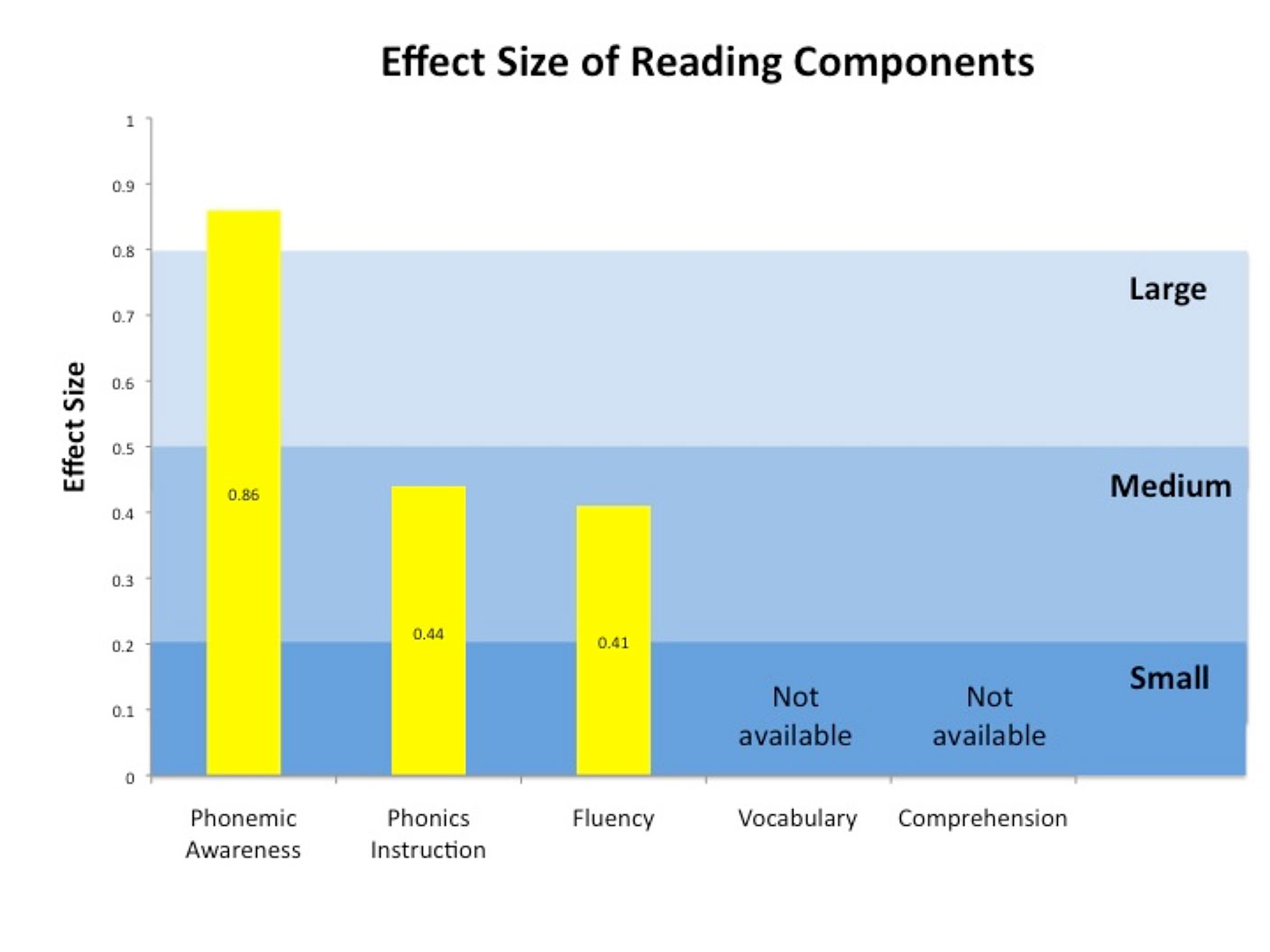What does science tell us about teaching reading?
Why is this question important? Mastering the skill of reading is considered essential for students to succeed. Reading and math are the two skills most frequently tested throughout a student’s years in school. Students who fail to read in the early grades fall further behind as they progress through elementary school, middle school, and high school.
See further discussion below.

Source(s): Teaching Children To Read: An Evidence-Based Assessment of the Scientific Research Literature on Reading and Its Implications for Reading Instruction
Result(s): The study established five areas with a sufficient evidence base that require they be included in any reading curriculum. These are systematic teaching of phonemic awareness, phonics instruction, vocabulary, direct and indirect vocabulary, and exposure to reading comprehension strategies.
Implication(s): Reading is essential to success in school. Research shows that students who are poor readers in the early years are likely to continue to fall behind in future years.
Author(s): The National Reading Panel: Donald N. Langenberg, Chair; Gloria Correro, Linnea Ehri, Gwenette Ferguson, Norma Garza, Michael L. Kamil, Cora Bagley Marrett, S.J. Samuels, Timothy Shanahan, Sally E. Shaywitz, Thomas TrabassoJoanna Williams, Dale Willows, and Joanne Yatvin.
Publisher(s): National Institute of Child Health and Human Development, 2000
Study Description: This study is a meta-analysis to identify the components required to effectively teach reading to children. In 1997, Congress asked the Director of the National Institute of Child Health and Human Development (NICHD), in consultation with the Secretary of Education, to convene a national panel to assess the status of research-based knowledge.
Below are the five essential components to reading identified by the Panel:
- Phonemic awareness: The panel identified 52 studies that met the criteria for including in the meta-analysis. To determine treatment effect sizes, 96 comparisons of treatment and control groups were entered into the meta-analysis. The finding showed that teaching children to manipulate phonemes in words improves their reading. This finding was replicated repeatedly across multiple experiments and thus provides converging evidence for causal claims.
- Phonics instruction: A way of teaching reading that stresses the acquisition of letter-sound correspondences and their use in reading and spelling, systematic phonics instruction produces significant benefits for students in kindergarten through 6th grade and for children having difficulty learning to read. Across all grade levels, systematic phonics instruction improved the ability of good readers to spell. The impact was strongest for kindergarteners and decreased in later grades.
- Fluency: Fluent readers are able to read orally with speed, accuracy, and proper expression. Despite its importance as a component of skilled reading and a critical factor in reading comprehension, fluency is often neglected in the classroom.
- Vocabulary: A total of 47 studies met the National Reading Panel research methodology criteria and were included in the analysis of vocabulary. The panel identified five methods for teaching vocabulary: (a) explicit instruction, (b) implicit instruction, (c) multimedia methods, (d) capacity methods, and (e) association methods. Unfortunately, the need for additional research in this area is great and prevented the panel from establishing an effect size.
- Comprehension: This component is critically important to the development of reading skills and therefore to the ability of children to obtain an education. The studies reviewed suggest that vocabulary instruction does lead to gains in comprehension but that methods must be appropriate to the age and ability of the reader. In general, the evidence suggests that teaching a combination of reading comprehension techniques is most effective. When students use the techniques appropriately, they assist in recall, question answering, question generation, and summarization of texts. When used in combination, they can improve results in standardized comprehension tests.
Definition(s):
- Phonemic awareness: The ability to focus on and manipulate the smallest units in a language that convey a distinction in meaning.
- Phonic instruction: Helping children acquire knowledge of the alphabetic system and its use to decode new words, and to recognize familiar words accurately and automatically.
- Fluency: The ability to read text with speed, accuracy, and proper expression.
- Comprehension: Understanding the meaning of a written text for the reader derived from a particular text, allowing the reader to effectively interact with the text without assistance.
Citation: National Institute of Child Health and Human Development. (2000). Report of the National Reading Panel. Teaching children to read: An evidence-based assessment of the scientific research literature on reading and its implications for reading instruction (NIH Publication No. 00-4769). Washington, DC: U.S. Government Printing Office.
